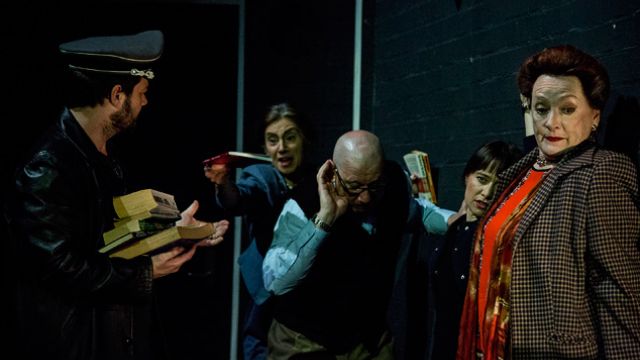The Chain Bridge
Steadily unravelling the secrets that have lain in wait for up to 54 years in the memories of three survivors of World War II, the 1956 Hungarian Uprising, and escape from war-sundered Budapest for eventual arrival in Melbourne, this multidimensional piece reveals the desperate responses that desperate circumstances wrought of good people simply trying to get by. And it skilfully sets about revealing the way in which those living with these memories of loss and compromise can contain complexities of gentleness and vehemence, of perspicuity and blindness, of deep humanity and unleashed violence.
This is not to say that the play is disturbing. Its does not view its subjects with cynicism or unkindness. Rather, it peels back the experiences that have made them the complex, rich characters they are. And it does so by the simple expedient of having them translate directly from one setting to another with a simple, often prestidigitational alteration in clothing or accessory and a quick change in furniture and lighting.
These changes consistently occurred with dexterity and minimal fuss, and it was remarkable how easy it was for us to know who had become whom, considering that each actor played at least five roles (and one played ten). Clever set design by Imogen Keen and remarkable lighting by Gillian Schwab were crucial in keeping us oriented. But the changing character of the sound stage, which seemed to surround the audience, played its part too.
As to the 34 characters from eight distinct periods (sometimes, cleverly, two periods simultanously) who came to life on stage in the bodies of just five actors: I must say that they were hard to fault, the realism of their relationships being limited only by the constraints on setup that a play of finite length must obey. If the emotionality with which secrets were held in the first act rather revealed that secrets existed to be uncovered, and if the first act’s plot direction could have had greater forward impetus, the play acquired real subtlety and momentum in its second act. A suitably shocking (but again not disturbing) climax and a gentle denouement led us to feel that we’d come to experience something worth while, something original, something with a satisfying inventiveness.
John P. Harvey
Image: [L–R] Peter Cook, Zsuzsi Soboslay, P.J. Williams, Kate Hosking, and Geraldine Turner, in The Chain Bridge. Photographer: Lorna Sim.
Subscribe to our E-Newsletter, buy our latest print edition or find a Performing Arts book at Book Nook.

